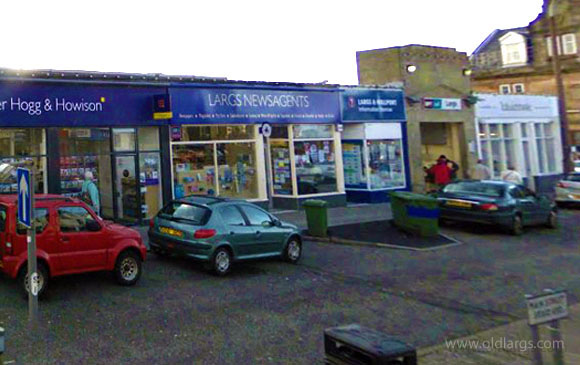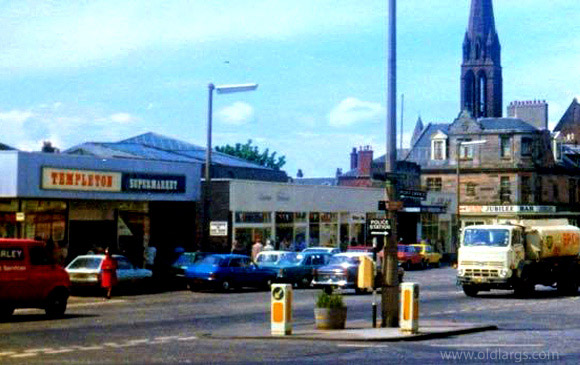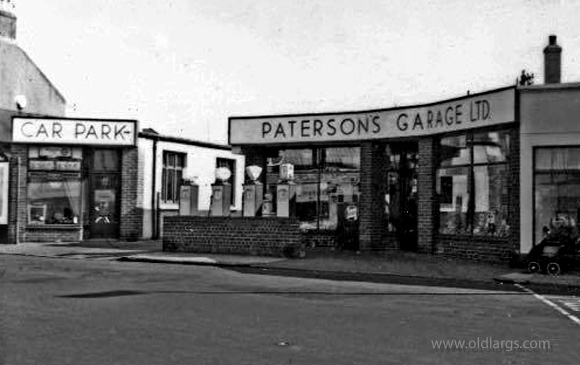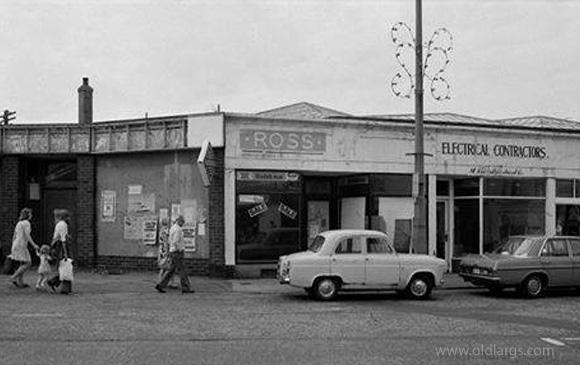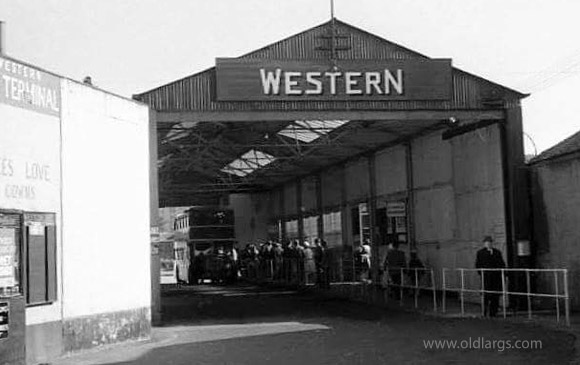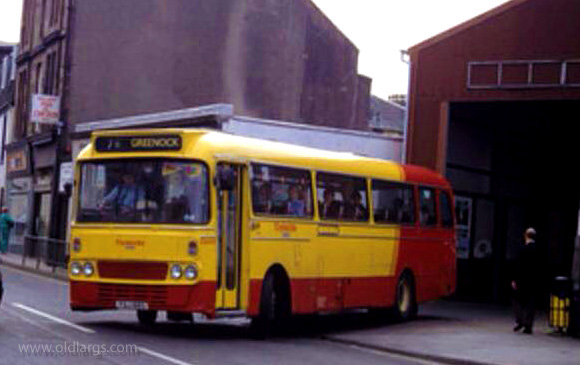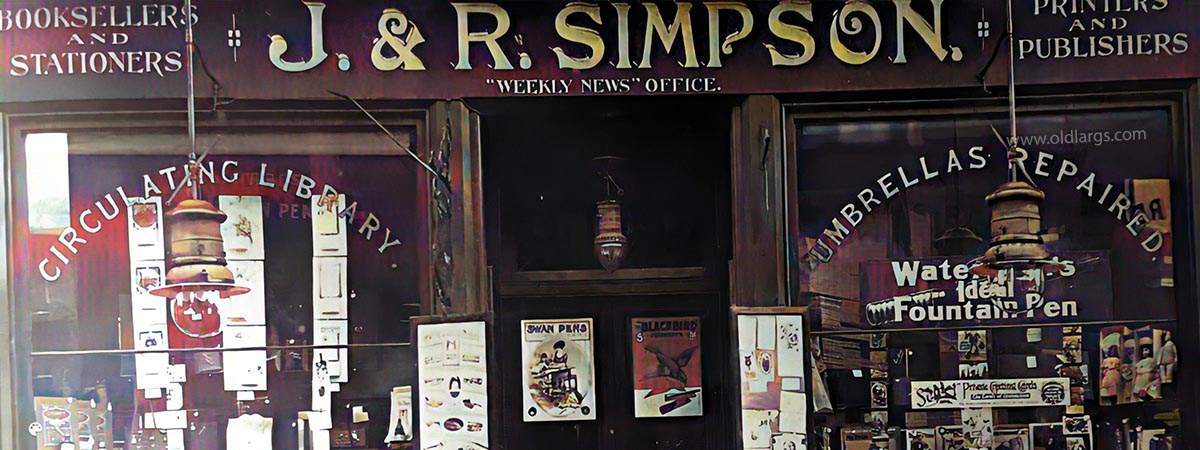
A walk up the Main Street.
In this section we will have a look at the area around Hyndman's Green and the Largs Railway Station.
Hyndman's Green
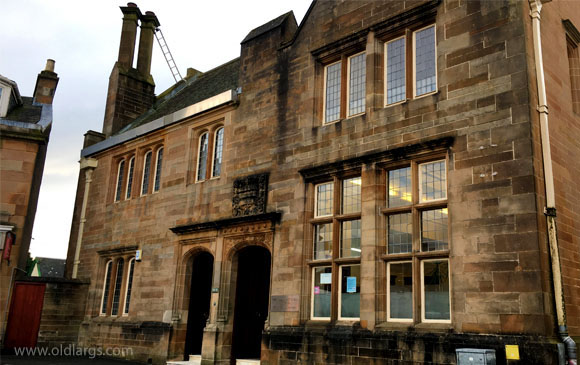


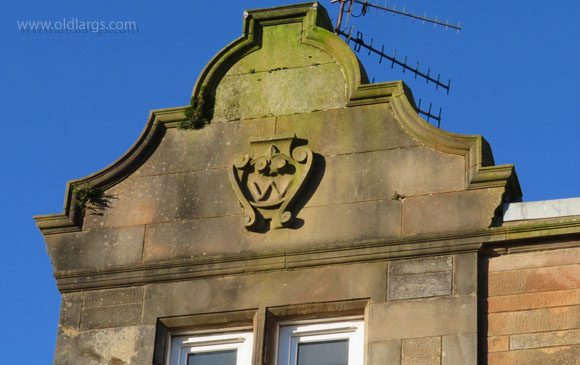
Since 1971 this building has been the home of McTaggart & Co Solicitors. It was built in the 1907 as a branch of the British Linen Bank in an area what used to be called Hyndmans Green. The building, a listed B Category, was designed by Sir George Washington Browne. The 1st floor was occupied by the bank manager as their home.
Prior to being built this was the location in 1898 of David Campbell & Sons, house furnisher and cabinet makers. Its was also the location of the Houstons family who were one of the Largs fishing familes.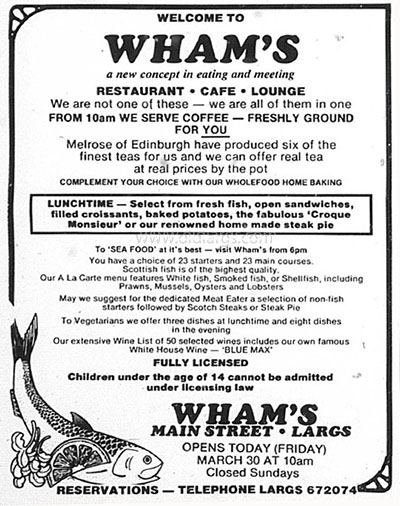
The Drouthy Neebours building was built as the Jubilee bar public house in 1887, the year of Queen Victoria’s golden jubilee. It was built by Mr John Watson who also had a shipbreaking company at the time. The wood from the scrapped ship, The Iron Duke, was used in the construction of the Jubilee Building for the joists, rafters and other internal woodwork. Inscribed in the stonework on the wall of the property which faces Crawford Street are the initials of its owner John Watson.
In March 1984 the Jubilee Bar was refurbished and re opened as Whams restaurant by owners Jimmy and Peggy Wham. It specialised in seafood and had an impressive evening menu which featured over 70 dishes, including a choice of 16 starters, 15 fish dishes and 16 meat courses. They also had a selection of over 60 wines available including Whams own wine called Blue Max. The wines were served in specially shaped Bavarian wine goblets.In 1997 the pub seen another refurbishment and new owners Belhaven when it became McCabes. Recently in 2017 it was renamed Drouthy Neebours.
What does Drouthy Neebors mean ? In case you are wondering it is taken from the second line of the famous Robert Burns poem Tam O'Shanter which he wrote in 1791. It translates to thirsty neighbours. The poem starts off with the line "When chapmen billies leave the street" which translates to "When the peddler people leave the streets" and then quotes the next line as "And drouthy Neebors, Neebors meet" which translates to "and thirsty neighbours, neighbours meet." Apart from the great new name the Old Largs team like the fact that this is one of only 2 pubs in Largs where Punk Brewdog IPA Beer is on draft.To the left of the pub entrance is the British Heart Foundation Charity Shop which used to be in 1991 City Bakeries and later in 1993 Bakers Oven.
Largs Railway Station
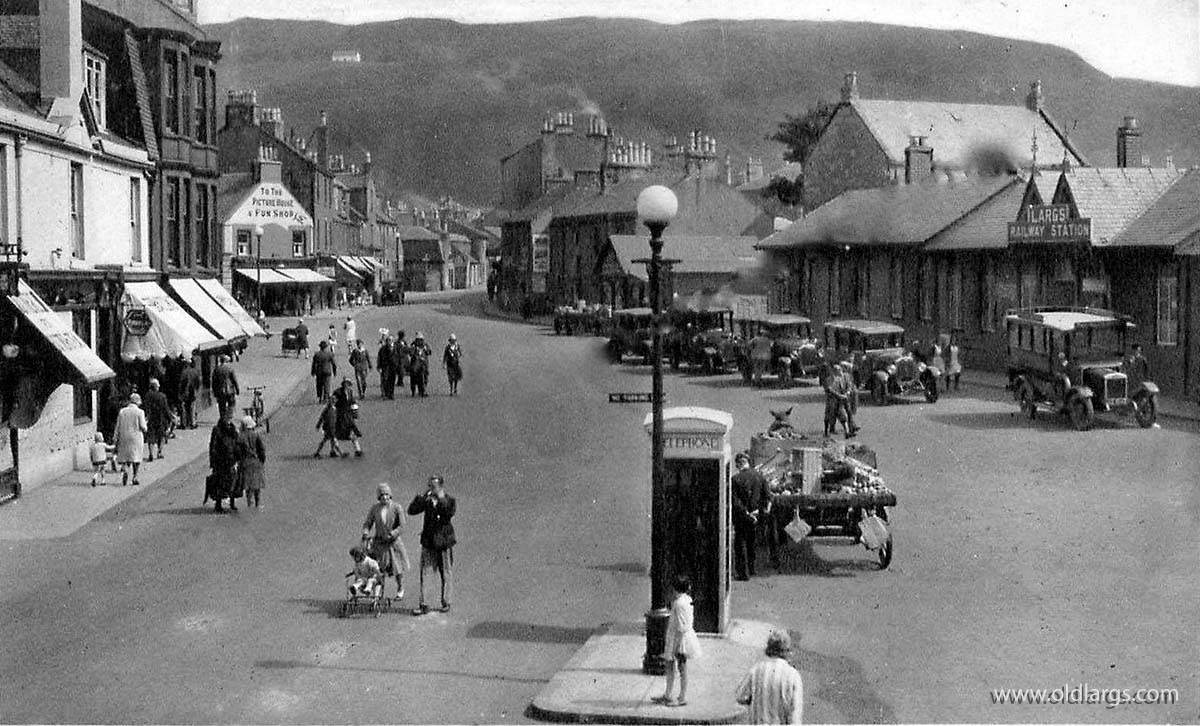
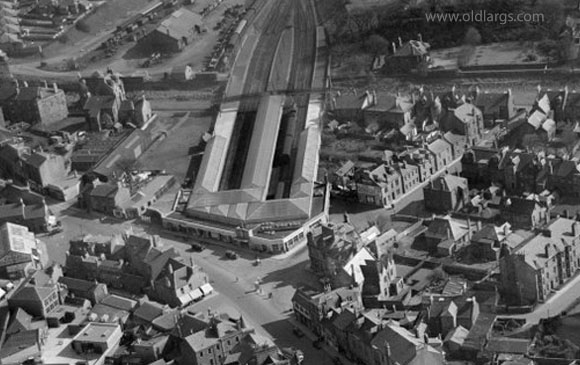
It would across the Noodsdale Burn near Netherhall and end up at a new station near Wilson and Nelson Street. It would have been a single line.
In 1876 another similar proposed route was intended to be put forward with a station ending at the grounds of the Springfield flats next to Barrfield's theatre. 1877 seen yet another proposal for a steam powered tramway from Wemyss Bay to Largs which would travel at 9mph.Another spate of interest in 1880 was in favour of a break away line extending to Largs from Inverkip. This was a line above the shore mainly on the hills past upper Skelmorlie and Knock Castle going into the back of the town with a station at Bath street. As these proposals came and went, with nothing ever coming out of them, the Glasgow and South Western Railway were slowly making their way from Ardrossan to West Kilbride which it did in 1878 and eventually reaching Fairlie in 1880.

On the 1st May 1885, the first passenger train steamed into the new station at Largs. Where the station was built was originally a row of houses which faced the Main Street with ground running down to the Gogo. The area was cleared for thee building of the first wooden station in 1885. This building was demolished at some point in the 1920s/30s and replaced with a new Victorian style station building which included ticket office, waiting rooms new platforms and a roof structure.
At its peak the Station was twice as big as todays layout with four platforms. When electrification came in 1987 two platforms were abandoned.The photo to the left shows how the Largs Station looked in the late 1980s prior to the Largs train crash.
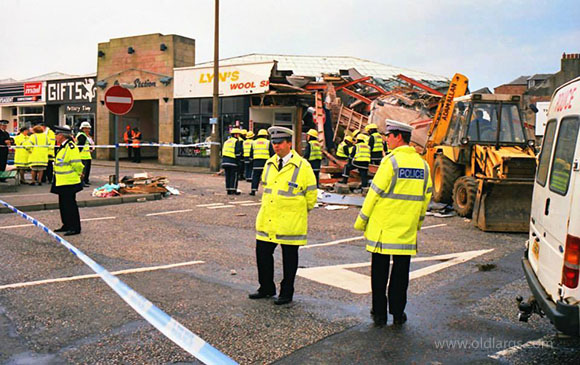

It was a miracle nobody was killed in the crash which was blamed on the rear unit had defective brakes. The train driver was praised for his quick thinking, as he realised the train was not going to stop, and ran through the carriages warning everybody to move away from the front of the train. Only five people were injured, including driver David Robertson. .
After the clean-up activity ended there was a long battle between developers with talk of a hotel and flats being built. Eventually some shops were rebuilt and a small ticket office was built in 2001. A £200,000 makeover including a new station building was completed in 2005.Train Station Shops
To the left of the station we have seen the Largs and Millport information tourist bureau, the pottery shop, Coast Clothing, Largs Newsagents, Station Toy shop, vapour and card shops.
From 1958 on the site of M&Co and Slater Hogg & Howison used to be the Old Patersons Garage. This was demolished in 1978 to make way for a Templetons Store. Later this was occupied by Prestos Supermarket. When this closed in 1991 MacKays of Largs took over and then M&Co. The car park entrance to the left of M&Co used to be the towns main bus station which was formerly the builders yard of J & W Duff.